Container: Definition, Working, Benefits, Applications, Differences, Image
This article explains containers end to end and shows how they differ from virtual machines. It defines what a container is, how containers work, and where Docker fits. It covers core benefits, common use cases, and container orchestration across cloud and hybrid environments. It then details container images, including structure, identification and versioning, building, base images, optimization, standards, metadata, registries, security scanning, SBOM, signing, distribution, multi-architecture support, lifecycle, performance, and compliance. Finally, it outlines how to containerize an application, manage platforms, and secure workloads.
What is a Container?
A container is an operating system–level virtualization unit that packages an application and its dependencies into a portable container image (typically conforming to the Open Container Initiative). When you run containers, a container runtime (for example, Docker Engine, containerd, or CRI-O) instantiates that image as one or more isolated processes on the host kernel. Unlike a virtual machine, containers share the host OS kernel, so multiple containers can start fast, use less memory, and stay consistent across a computing environment—laptops, data center, and cloud computing or hybrid cloud platforms.
What is a Docker container?
A Docker container is a lightweight, isolated process started from a container image that includes an app and its user-space dependencies. The container shares the host OS kernel and is isolated with Linux namespaces and Cgroups which allows fast startup and high density. Docker Engine (via containerd) mounts the image’s read-only layers and adds a small writable layer at runtime. Containers run consistently across environments and integrate with orchestrators like Kubernetes for deployment and scaling.
How is a container different from an application package?
A container packages an application with its dependencies into an isolated runtime, while an application package includes only the app and depends on the host environment.
Here are the points that distinguish them:
How does containers work?
A container is a lightweight, isolated process that runs from a container image. Containers virtualize the operating system—not the hardware—so the host kernel provides isolation and resource control while the application sees a consistent runtime environment. Practically, containers are packages of software that include code plus user-space dependencies, making them more portable and often more efficient and resource-efficient than virtual machines, as long as a compatible container runtime is available on the container host.
How it works, end to end:
- You use containers to build an image from your source; the image follows container standards (OCI container formats) so it can run in any computing environment.
- A container engine (for example, the one Docker provides) pulls the image and creates an isolated process using kernel namespaces and cgroups; these containers isolate files, network, users, and limit a container from consuming all computing resources.
- The engine starts a single container or run multiple containers on the same host; containers can run directly on bare metal or as containers in VMs.
- Containers provide a consistent runtime, so containers allow developers to build once and deploy the same artifact across data centers, public cloud cloud service platforms (e.g., Google Cloud, Microsoft Azure), and across hybrid cloud or hybrid cloud and multicloud setups.
- You can extend it like this, with a very short, specific mention of container security:
- At scale, an orchestration tool (Kubernetes) on a container platform schedules thousands of containers, balances load, rolls out updates, and helps manage containers and container security by enforcing image policies, runtime controls, and vulnerability scanning; the broader container ecosystem and the Cloud Native Computing Foundation standardize many of these components.
- Because containers virtualize the operating system, not hardware, containers make faster starts and higher density possible—key benefits of containers for cloud-native applications, cloud migration, and even serverless computing models.
What are the key benefits of using containers?
Containers improve software delivery by standardizing packaging, isolating execution, and accelerating deployment. The points below capture the practical benefits teams realize in production.
- Portability across environments — A single image runs the same on laptops, data centers, and clouds; containers are more portable because they follow common standards for container images.
- Consistent runtime - Containers provide consistent dependencies and configuration, eliminating “works on my machine” issues and reducing failures when you deploy containers.
- Efficiency and density - Sharing the host kernel makes containers are more efficient than most VM-centric setups; the same hardware can run many more containers.
- Faster startup - Processes launch in seconds, improving release cadence and scaling responsiveness for bursty container use cases.
- Isolation with lower overhead - Containers are isolated with namespaces and cgroups, offering strong process separation without the full OS weight of containers and virtual machines.
- Developer velocity - Reproducible builds and small images mean containers make it easier to iterate, test, and ship applications across teams.
- Operational simplicity - Standardized images give platform teams containers to run and manage using uniform tooling and policy.
- Hybrid and multicloud flexibility - Run applications across hybrid cloud consistently, keeping deployment choices open as needs evolve.
- Scalability - Orchestrators can schedule and scale containers are often in the thousands with predictable behavior.
- Security posture - Small, minimal images reduce attack surface; immutability and quick rebuilds help respond faster to issues.
- Cost control - Higher utilization and right-sizing decrease infrastructure spend while sustaining performance.
- Ecosystem maturity - Since Docker in 2013, containers have become a broadly supported standard; containers will continue to be containers are ideal for modern workloads where speed, portability, and repeatability are priorities.
How do you containerize an application?
Containerizing an application means packaging your app with everything it needs, including runtime, libraries, and configuration, into a lightweight isolated image that runs consistently across any environment.
Here are the points related to the containerization process:
- Define the container boundary: Identify the single process to run (web API, worker, job). Fix input/output, ports, and config surface (env vars, files, secrets).
- Inventory dependencies: List OS packages, language runtime, libraries, build tools. Separate build-time from run-time dependencies.
- Choose a minimal base image or container OS: Prefer distroless/scratch or a slim distro that matches your runtime (glibc vs musl). Document why you chose it.
- Write a Dockerfile (single, focused process):
- Set USER to a non-root UID.
- Set WORKDIR, ENV, EXPOSE (if needed), and a single ENTRYPOINT/CMD.
- Add a HEALTHCHECK with a fast, deterministic probe.
- Use multi-stage builds:
- Stage 1: compile/build and run tests.
- Stage 2: copy only the built artifacts and minimal run-time deps.
- Result: smaller image, reduced attack surface.
- Optimize the image: Merge RUN steps to reduce layers; clean package caches; strip symbols; remove shells/package managers from the final stage.
- Exclude noise with .dockerignore: Omit node_modules, build artifacts, VCS metadata, test data, and local env files.
- Externalize configuration and secrets: Read config from env vars or mounted files. Inject secrets at runtime (not baked into the image).
- Add metadata for provenance: Apply OCI labels (owner, repo, version, commit, build time). Include SBOM/attestations if your toolchain supports them.
- Build reproducibly: Use BuildKit/Buildx with deterministic flags. Pin versions (base image tag + digest). Avoid latest.
- Scan and sign: Run image vulnerability scans. Fail the build on severity thresholds. Sign the image (e.g., Cosign) and produce provenance.
- Tag and push to a container registry: Use semantic tags and immutable digests (e.g., app:1.4.2 and the sha256: digest). A container registry stores and serves versioned container images, so push the image to the target registry.
- Test the container artifact: Run it locally with the same env/config as production. Validate healthcheck, logging to stdout/stderr, and graceful shutdown.
- Prepare for deployment: For Kubernetes: define a Deployment/Job with resource requests/limits, non-root securityContext, read-only rootfs, and image pull by digest. For other platforms: apply equivalent runtime policies and admission gates.
- Measure and iterate: Track cold-start time, memory/CPU, and image size. Set thresholds (e.g., size < 200 MB, cold start < 2 s) and refine the Dockerfile accordingly.
How do you manage containers and platforms?
Managing containers and platforms means controlling how containerized workloads are built, secured, deployed, and operated across environments.
Here are the points that describe how to do it:
- Set ownership and objective: Define service ownership, SLOs (availability, latency), and error budgets. Map every workload to an owner, tier, and environment.
- Harden supply chain and registries: Use private registries with RBAC and signed images (digest-pinned). Enforce vulnerability thresholds in CI; auto-rebuild base images on CVE feeds. Apply retention and garbage collection policies.
- Standardize runtime policies: Run as non-root, drop Linux capabilities, set read-only rootfs, and restrict egress by default. Require resource requests/limits and liveness/readiness/startup probes for every deployment.
- Use declarative container orchestration: Container orchestration platforms such as Kubernetes manage desired state with manifests (e.g., Deployments, StatefulSets, Jobs), automatically schedule and scale containers, and employ rollout strategies (rolling/blue-green/canary) with health-gated promotions and automatic rollback on failure.
- Apply admission and governance controls: Gate deployments with policy as code (OPA/Conftest/validating webhooks). Block mutable tags, privilege escalation, hostPath mounts, and unsafe sysctls. Require image digests and approved registries.
- Isolate tenants and blast radius: Segment by namespaces, network policies, and separate node pools. Use PodSecurity standards, runtime classes, and quotas to prevent noisy-neighbor issues.
- Engineer for reliability: Spread replicas across zones; use PodDisruptionBudgets and priority classes. Set autoscaling (HPA/VPA) with SLO-aligned triggers. Keep surge/partition settings explicit for controlled rollouts.
- Instrument and observe: Centralize logs (stdout/stderr), metrics, and traces. Define golden signals per service; create SLO dashboards and burn-rate alerts. Capture audit logs for API and registry actions.
- Manage nodes and capacity: Right-size instance types; separate system and workload nodes. Use taints/tolerations and topology spread constraints. Automate cluster/node upgrades with surge and conformance checks.
- Backups and disaster recovery: Back up persistent volumes and cluster state (etcd/manifests). Test restore runbooks quarterly. Document RPO/RTO per application tier.
- Cost and efficiency controls: Enforce requests/limits, bin-pack with topology hints, and clean unused images. Track cost per namespace/team; set budgets and alerts. Prefer multi-stage images to reduce pull time and storage.
- Lifecycle and change management: Use promotion tracks (dev→stage→prod) and release channels. Version all manifests; require code review and automated conformity checks before merge.
- Security operations: Continuously scan running workloads for drift from the built image. Rotate credentials/keys, enable image provenance verification at admission, and run regular incident response game-days.
- Documentation and runbooks: Maintain per-service runbooks: startup, health checks, scaling, rollback, and dependency maps. Keep “golden path” templates for new services to ensure consistent, compliant defaults.
How do you secure a container?
Securing a container means protecting the image, runtime, host, and cluster so workloads run safely and as intended.
Here are the steps that outline how to do it:
- Lock down the software supply chain: Pin base images by digest, avoid latest, and rebuild on a fixed cadence. Generate SBOMs (e.g., SPDX/CycloneDX), scan every build with severity gates, and fail on policy violations. Sign images (e.g., Cosign) and verify signatures and provenance at admission.
- Minimize and harden images: Use distroless/scratch where possible. Remove shells, package managers, and compilers from the final stage. Run as a non-root UID/GID, set an explicit USER, and make the root filesystem read-only with needed tmpfs mounts.
- Enforce least privilege at runtime: Drop Linux capabilities to a minimal set, disable privilege escalation, and avoid hostPath, hostPID, and hostNetwork. Apply seccomp, AppArmor/SELinux profiles, and read/write filesystem policies. Set CPU/memory limits to prevent resource abuse.
- Protect secrets and configuration: Inject secrets at runtime via a secrets manager or orchestrator primitives; never bake them into images. Use short-lived credentials, rotate keys regularly, and restrict environment-variable exposure and process listings.
- Constrain network access: Default-deny with namespace/network policies; allow only required egress and service-to-service flows. Use TLS/mTLS for service identity, and restrict outbound metadata/API endpoints. Segment control-plane, data-plane, and registry networks.
- Govern registries and artifacts: Use private registries with RBAC, immutable tags, retention, and garbage collection. Maintain allowlists/denylists of sources, mirror external images internally, and replicate across regions for reliability.
- Gate deployments with policy as code: Validate manifests with OPA/Conftest and admission webhooks. Require non-root, no privileged containers, digest-pinned images, resource requests/limits, health probes, and approved registries before scheduling.
- Harden the host and cluster: Keep the kernel and container runtime patched. Use minimal host OS images, separate system and workload nodes, and enable auditd. Restrict kubelet credentials, rotate certificates, and enable Pod Security Admission with baseline/restricted policies.
- Monitor, detect, and respond: Centralize logs, metrics, and traces. Detect drift from the built image, suspicious syscalls, privilege changes, and egress anomalies. Set actionable alerts mapped to runbooks, and rehearse incident response with rollback by digest.
- Ensure integrity and compliance: Track licenses and cryptography requirements (e.g., FIPS), preserve attestation evidence, and maintain audit trails for registry and cluster changes. Regularly test backups and restores for stateful workloads.
Containers vs Virtual Machines: What is the difference?
Below are the differences between Containers vs Virtual Machines:
What is a Container image?
A container image is a read-only, content-addressed package that contains everything an application process needs to run. For a simple container image example, think of a small web API packaged with its runtime, libraries, and static assets so it can run the same way everywhere. It includes a layered root filesystem (binaries, libraries, assets) plus configuration metadata such as the entrypoint, command, environment, user, and labels. Container images, meaning the immutable artifacts produced by containerization, are the same basic concept whether you use Docker or another builder; container images Docker developers create every day still follow this OCI-based model. platforms.
How is a container image structured?
A container image is composed of immutable artifacts that describe both a root filesystem and how to run it. Its core structures are:
- Layer blobs (filesystem changesets)
Ordered, content-addressed tar archives (usually compressed) referenced by cryptographic digests. Each layer records file additions/edits/deletions (via whiteouts). When stacked, they form the image rootfs.
- Manifest (image descriptor)
A small JSON document listing the config object and the ordered layer digests, their sizes, and media types. It is the entry point clients pull to fetch the exact bytes that define the image.
- Config JSON (runtime configuration + provenance)
Contains:
- os, architecture, variant
- rootfs.diffIDs (uncompressed layer hashes for verification) and history (how layers were produced)
- config (the runtime defaults): Env, Cmd, Entrypoint, WorkingDir, User, ExposedPorts, Volumes, Labels, Healthcheck, StopSignal.
- Image index / manifest list (multi-architecture)
A higher-level descriptor that maps platforms (e.g., linux/amd64, linux/arm64) to per-platform manifests, enabling a single tag to select the correct image for the pulling node.
- Content-addressable storage
Every blob (config or layer) is addressed by its digest (sha256:…). Tags (e.g., v1.4.2) are movable references that point to a manifest; the digest is the immutable identity.
- Mounting at runtime (union/overlay filesystem)
The container runtime unpacks layers into a layer store and presents them as a single merged, read-only rootfs; each running container adds a thin writable copy-on-write layer on top.
- Optional OCI-compatible artifacts
Signatures, attestations/provenance, and SBOMs can be stored and distributed alongside the image using the same registry and reference model.
FAQ
Q1. What is Containerization?
Ans: Containerization is the practice of packaging an application together with its libraries, runtime, and configuration into an immutable container image, and running it as a lightweight, isolated container on any compliant runtime. It improves portability, consistency across environments, startup speed, and resource efficiency, and scales reliably when managed by orchestrators like Kubernetes.
Q2. Where are containers used?
Ans: Common uses include microservices, APIs, CI/CD jobs in a DevOps pipeline, data pipelines, AI/ML inference, serverless platforms, and edge or IoT deployments. Teams also use them for local development, testing, and packaging legacy apps for consistent rollout as part of a modern microservices architecture.
Q3 .What is a container runtime?
Ans: A container runtime (e.g., containerd, CRI-O) is the software that pulls images, unpacks layers, sets up namespaces/cgroups, and starts the container process from the image’s entrypoint— It implements OCI specs so the same image runs consistently across compliant hosts and orchestrators.
Q4. What is an SBOM for container images and why does it matter?
Ans: A Software Bill of Materials (SBOM) is a machine-readable inventory of all packages and components in an image (e.g., SPDX, CycloneDX). It enables precise vulnerability scanning, license compliance, and faster incident response by showing exactly what’s inside each image version.
Q5. What is Application Client Container?
Ans: An Application Client Container (ACC) is the Jakarta EE client-side runtime that executes application-client modules outside the application server while still providing enterprise services.






.webp)
.webp)
.webp)







%20(1).png)



